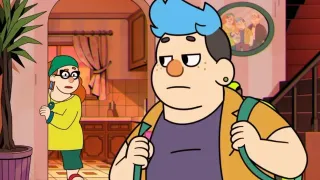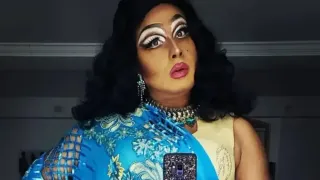May 28, 2016
Out There :: Museum Collection, by the Book
Roberto Friedman READ TIME: 3 MIN.
Since the re-opening of SFMOMA has already garnered so much press, we thought we'd read and review the new accompanying catalog "San Francisco Museum of Modern Art: 360 - Views on the Collection" (SFMOMA). Edited by Judy Bloch and Suzanne Stein , the book reproduces over 200 artworks, and includes prose and poetry by 60 authors describing much of the art.
There is both scholarship and art-loving glee on display here. Is it peevish of Out There to enjoy the pictures of artworks that are not described at length in essays? One of these is a favorite of ours in the museum's collection, Arshile Gorky's "Enigmatic Combat" (1936-47), oil on canvas, for its sheer inventiveness and exuberance of form and color. For personal resonance, Max Beckmann's "Frau bei der Toilette mit roten und weissen Lillien" (1938), oil on canvas, has always reminded us of our dear departed Aunt Ruthie . She's there on the canvas.
The book is a treasurehouse of artistic delights and incisive commentary. Curator Sarah Roberts calls Robert Rauschenberg's seminal "Collection" (1954-55) a rock and roll signature artwork, then explains why. Curator Caitlin Haskell brings penetrating insight to the dumb metal boxes of Donald Judd's "To Susan Buckwalter " (1964). Philip Guston is represented by his later, taboo-breaking figurative work. The artist is quoted: "That's the only possession an artist has - freedom to do whatever you can imagine."
Kevin Killian describes meeting Jess in his essay on the artist's "Narkissos" (1976-91), and quotes him describing the origin of his title. "Robert [Duncan, the poet] used to say that the word 'kiss' derives from the name 'Narkissos,' that the word was smuggled into our language through the Greek, and that the kiss was smuggled into the world through Narcissus ."
Alice Neel is represented by a portrait of Fluxus pioneer Geoffrey Hendricks and artist Brian Buczak , lovers and artistic collaborators, that's intimate and somehow larger. Grupa O.K. (Julian Myers and Joanna Szupinska ) observe, "In the curve of a nose or a sweep of ochre shadow, Neel could evince misery, exhibitionism, naivete, or psychosis."
Curator Gary Garrels, who hung the Fisher Collection galleries, describes the paroxysms of civic squeamishness that brought Robert Arneson's memorial bust "Portrait of George (Moscone)" (1981), an important historical piece by a major California artist intended for City Hall, rejected by the politicos, thence safely into the SFMOMA collection.
The catalog includes some of our favorite Bay Area writers on art, such as Dodie Bellamy on Hans Bellmer. "'La mitrailleuse en etat de grace' [1937] rewires my bulbous surrealist dream - its clutch of discomfiting angles, its Patty Hearst post-SLA-kidnapping militancy. Faceless, I think, is better than half a face." Glen Helfand on Matthew Barney's Cremaster 2: The Drones' Exposition (1999): "It's easy to forget that Barney, a mythic multimedia art star, is a sculptor. His achievements place as much emphasis on social as object sculpture."
As always, career art historians add insight and fresh perspective. Curator Caitlin Haskell on Alexander Calder 's "Double Gong" (1953): Calder "was his generation's best engineer of chance encounters - and few have rivaled him since." Curator Jenny Gheith on Cady Noland's "Walk and Stalk" (1993-94) quotes the artist: "Boundaries are always being explored and exploited. At this moment privacy is our version of the Western frontier." Gheith adds, "Soon afterward, Noland sought her own freedom from unauthorized intrusion and dropped out of the art world."
Plainly Jane
This week arts writer Tavo Amador reviews "Conversations with Classic Film Stars: Interviews from Hollywood's Golden Era" by James Bawden and Ron Miller. He and Out There are jointly delighted to share a wee tidbit from the book.
Actress Jane Wyman apparently controlled every aspect of her TV show "Falcon's Crest." She often clashed with guest stars. Wyman is quoted as saying, "Lana Turner? I could never figure that one out. She was never prepared, and you must know your lines on episodic TV. And after we had Leslie Caron around, and Gina Lollobrigida, I told the producers, 'No more international harlots. Do you understand me?'
"The other day I'm talking to a young thing who has joined the cast, and she chirps, 'I hear you've made some movies, too.' And I sweetly smiled and said, 'Kiddo, I've been at it for 60 years. You should be as fortunate, I dearly hope.'" That's the Golden Era spirit!






